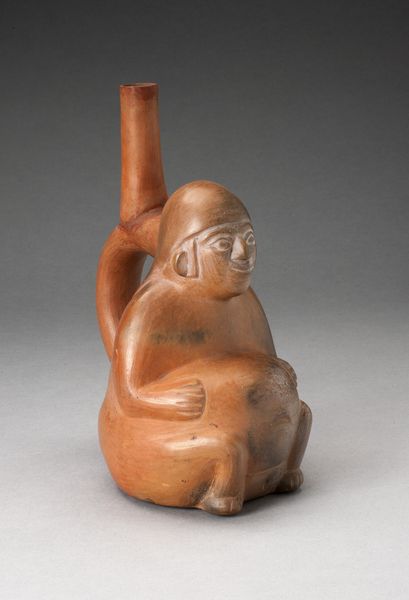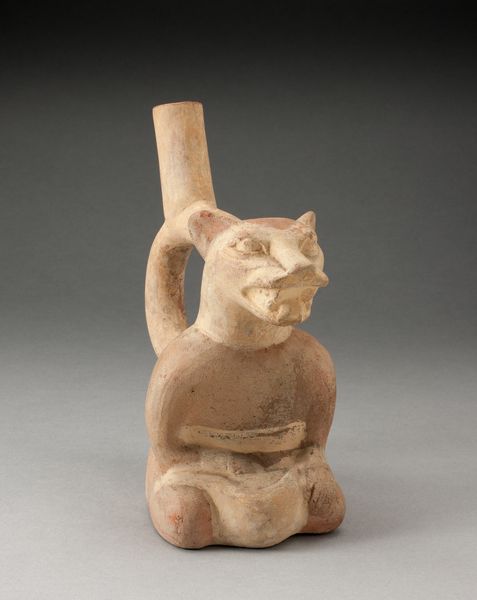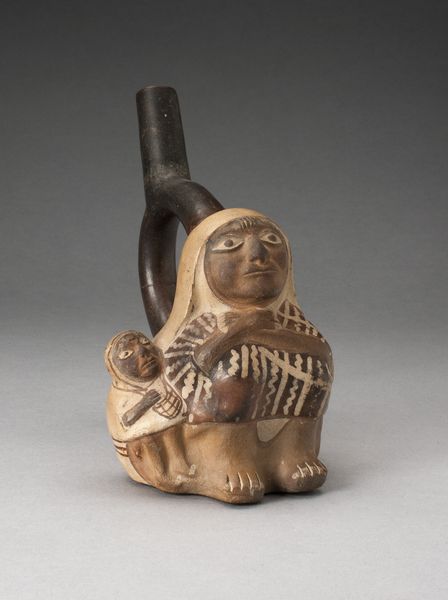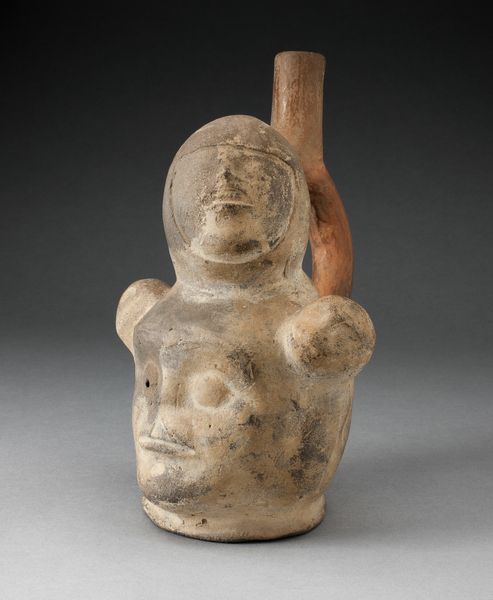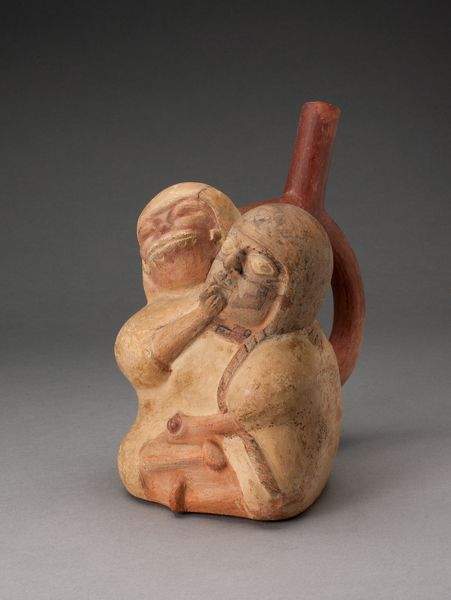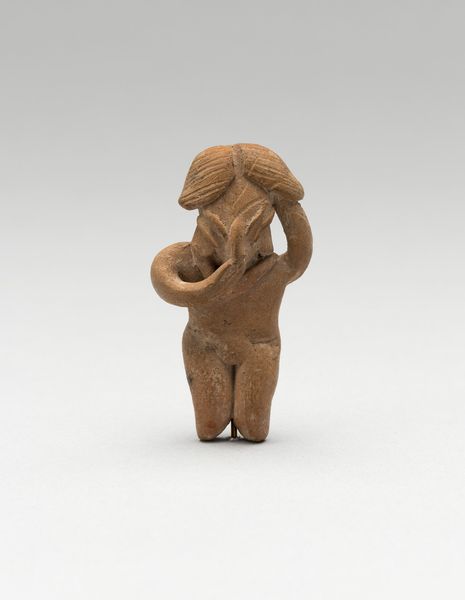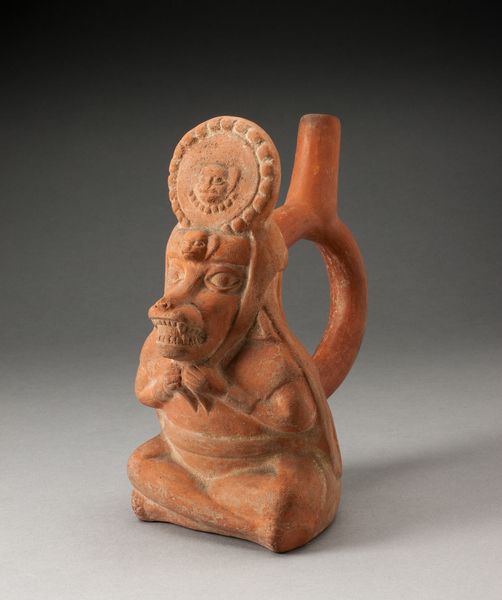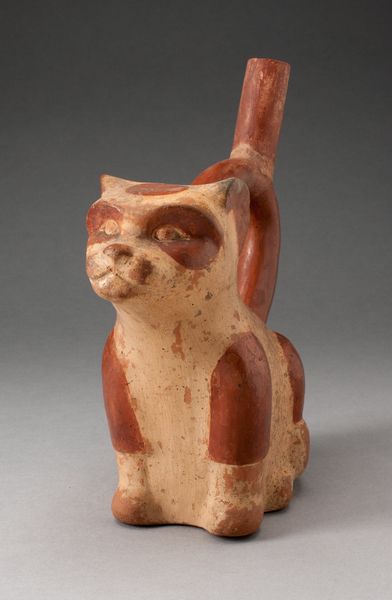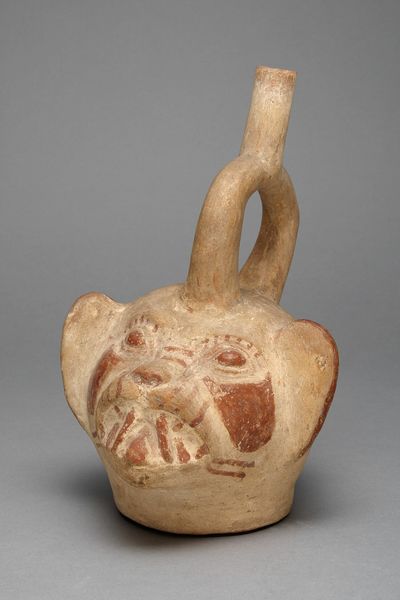
Handle Spout Vessel in the Form of a Seated Man Carrying a Jar Possibly 700 - 1000
0:00
0:00
ceramic, sculpture, terracotta
#
ceramic
#
figuration
#
sculpture
#
terracotta
#
indigenous-americas
Dimensions: 20.6 cm (8 1/8 in.)
Copyright: Public Domain
Editor: We're looking at a ceramic piece from the Lambayeque culture, dating perhaps from 700 to 1000. It's called "Handle Spout Vessel in the Form of a Seated Man Carrying a Jar." It has such a gentle, almost humorous quality to it. What strikes you most about the vessel? Curator: Immediately, it is the articulation of form. The smooth curvature of the figure contrasts with the geometric precision of the jar he carries, and the spout extending upwards. Consider the balance: the figure's seated posture grounds the vessel, providing a stable base. Then note how the loop handle mirrors the shape of the jar, creating a visual echo. How might the texture contribute? Editor: The surface looks quite smooth, almost polished in areas. Does that reflect its intended function, perhaps for containing liquids? Curator: Precisely. The smooth surface speaks to functionality. But more critically, the manipulation of the ceramic medium – the molding, firing, and potential polishing – these processes showcase the artist’s command over their material. Is it not a sophisticated play between representational form and the raw physicality of clay? Think how light might play across those surfaces! Editor: That makes sense. So it's about appreciating how the artist has controlled and transformed the material, as much as what the vessel depicts. Curator: Yes. And examine the lines: See how incised lines detail the figure's garment? These are deliberate formal choices which are critical to decoding this object. Without those choices, it’s mere material. Editor: It's amazing to consider how much thought and skill went into creating something that is both practical and artistically expressive. I hadn't fully considered the artist's process before. Curator: Indeed, that's formalism in action. The vessel is an object to contemplate on form first, function second.
Comments
No comments
Be the first to comment and join the conversation on the ultimate creative platform.
